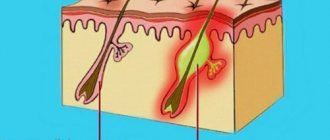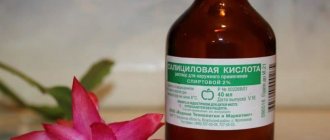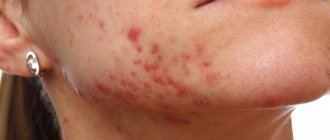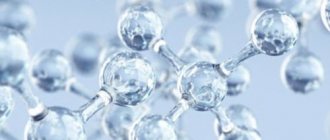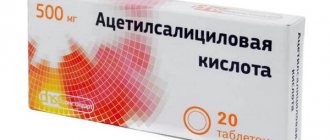Salicylic acid is well known to us since childhood. When there was not such a variety of special products for the care of problem skin as there is now, a dark brown pharmaceutical bottle often helped teenagers out in difficult situations. And although salicylic peeling has been used in cosmetology for quite a long time, today it has not lost its effectiveness and popularity. Doctors at our clinic recommend this procedure as a reliable remedy for treating oily and problematic skin.
Composition and release form
The drug contains the active component salicylic acid, excipients: ethyl alcohol 70% and petroleum jelly in the ointment. Depending on the concentration of the finished product, the amount of the main ingredient varies from 1 to 2 g.
Salicylic acid is dispensed in the form of an alcohol solution in a dark glass bottle of 25 and 40 ml with attached instructions on the label. Concentration possible: 1%, 2%, 5%, 10%.
There is also an ointment with salicylic acid 2%, 3%, 4%, 5% and 10%. Volume 25 g, packaged in aluminum tubes or glass jars.
Salicylic peeling as a remedy for blackheads*45.13
Depending on the pH and concentration of the active substance, the effect on the skin can occur at the superficial or mid-superficial level. The cosmetologist selects the composition individually for each patient.
Superficial peeling involves the use of salicylic acid with a concentration of 15-20% with an acidity level in the range of 2.0-3.2 pH. It is used to care for oily, acne-prone skin.
The mid-surface option involves the use of active components in a concentration of 25-30%, while the acidity level of the composition reaches 1.3-2.0 pH. This peeling removes dead skin cells of the epidermis, activates the processes of cell restoration and renewal, and stimulates the production of collagen and elastin. As a result of the mid-surface action of the acid, the skin becomes more elastic, dense, and fine wrinkles are eliminated.
Cosmetologists recommend carrying out the salicylic peeling procedure in courses. The duration of the session, activity and concentration of chemicals are selected by the cosmetologist strictly individually. In the presence of open and closed comedones, 5-7 sessions are usually performed with a frequency of no more than once every 1-2 weeks. It is noteworthy that salicylic acid is used in liquid form for facial care, and a paste-like active substance is used for cosmetic procedures on the body.
Pharmacological effect
The medicine is intended for local use. The therapeutic effect is determined by anti-inflammatory, antiseptic, keratolytic, distracting and drying effects.
At a high concentration of salicylic acid, the drug has an inhibitory effect on microbial proteins. Has a high effect on nerve receptors. Helps reduce pain, improves tissue nutrition and effectively fights the causes of pathologies.
As a result of the high content of the active substance, there is an effect on the sebaceous and sweat glands. Therefore, it is active for the treatment of seborrhea, pimples, acne, and also for the care of oily skin types.
At low concentrations, salicylic acid has a weak antimicrobial effect. Since it belongs to the group of non-steroidal anti-inflammatory drugs, it has a number of therapeutic properties:
- Relieves tissue swelling.
- Stops itching.
- Has a vasoconstrictor effect.
- Suppresses the inflammatory process.
The drug is able to delicately remove the top layer of skin, promoting its further regeneration. Salicylic acid normalizes the structure of cell membranes, cleanses and narrows pores, and organizes the outflow of sebaceous secretions. Therefore, it is considered an essential medicine against burns, dandruff, wounds and other dermatological diseases.
When used externally, the therapeutic effect is observed after 3-5 hours. Excreted by the kidneys, unchanged in the amount of 6%.
Salicylic acid is one of the most well-known and widely used analgesic, antipyretic and anti-inflammatory drugs. Salicylic acid itself is used topically for its keratolytic, bacteriostatic, fungicidal and photoprotective properties. Salicylic acid derivatives are also used in medicine as antipyretic, antirheumatic, anti-inflammatory and analgesic agents.
Synonyms Russian
Aspirin, non-acytylated salicylates.
English synonyms
Salicylic acid, Salicylamide, Salicylamidum.
Research method
High performance liquid chromatography with tandem mass spectrometry.
Units
mcg/ml (micrograms per milliliter).
What biomaterial can be used for research?
Venous blood.
How to properly prepare for research?
- Children under 1 year of age should not eat for 30-40 minutes before the test.
- Do not eat for 2-3 hours before the test; you can drink clean still water.
- Do not smoke for 30 minutes before the test.
General information about the study
Salicylic acid is a 2-hydroxybenzoic or phenolic acid, named after the willow tree (from the Latin salix "willow"), from the bark of which it was first isolated. Salicylic acid and salicylates, as well as its esters and other synthetic derivatives of salicylic acid, have a pronounced anti-inflammatory effect. Salicylic acid has weak antiseptic, irritant and keratolytic properties and is used externally in ointments and solutions in the treatment of skin diseases. A number of studies have shown that topical application of salicylic acid reduces the rate of keratinocyte proliferation and inhibits cholesterol sulfotransferase, the enzyme responsible for the formation of cholesterol sulfate in keratinocytes.
There are acetylated and non-acytylated salicylates - derivatives of salicylic acid. Acetylated salicylates include acetylsalicylic acid (aspirin). It is prescribed as an anti-inflammatory, antipyretic and analgesic. In addition, aspirin is used to suppress platelet aggregation and prevent thrombosis. The mechanism of the antiaggregation effect of acetylsalicylic acid is associated with a violation of the synthesis of thromboxane A2.
Non-acetylated salicylates (sodium salicylate, salicylamide) have less antiprostaglandin activity, so complications associated with prostaglandin blockade are less common. These drugs have virtually no effect on platelet function and are less likely to cause hemorrhagic complications. Non-acetylated salicylates are used as an anti-inflammatory agent. Salicylamide blocks cyclooxygenase, disrupts the metabolism of arachidonic acid, reduces the amount of prostaglandins both in the site of inflammation and in healthy tissues, and suppresses the exudative and proliferative phase of inflammation. The analgesic effect of salicylamide is due to a decrease in the concentration of biogenic amines, which have algogenic properties, and an increase in the pain sensitivity threshold of the receptor apparatus. During fever, the drug enhances heat transfer by dilating skin blood vessels and inhibits heat production due to a decrease in chills. Indications for the use of salicylamide are fever, pain of mild to moderate intensity, inflammatory diseases of the joints and soft tissues.
What is the research used for?
- To determine the concentration of the drug in the blood.
- To select an individual dosage of the drug.
- To optimize treatment control through dose adjustments.
- To assess drug interactions.
- To diagnose overdose.
- To identify violations of the drug regimen.
- To prevent the toxic effect of the drug.
When is the study scheduled?
- When prescribing a drug for treatment.
- If necessary, determine the concentration of the drug and monitor its fluctuations in the blood.
- If the effectiveness of the drug used is insufficient and the issue of dose adjustment is decided.
- When changing the dosage and dosage form of the drug.
- If a drug overdose is suspected.
What do the results mean?
Reference values: 5 - 300 mcg/ml.
The results of the study are assessed by the attending physician taking into account the dose of salicylic acid, dosage regimen, patient age, concomitant pathology and individual tolerance to the drug.
What can influence the result?
- The concentration of salicylic acid in the blood serum may vary in patients with renal or hepatic insufficiency.
- Antacids, magnesium and aluminum preparations can reduce the concentration of salicylic acid in the blood due to slower and reduced absorption.
- The concentration of acetylsalicylic acid may increase with simultaneous intake of caffeine, ethanol, metoprolol, dipyridamole.
Indications
Salicylic acid can be used as monotherapy and complex action. In both cases it is able to treat the following conditions:
- Psoriasis.
- Ichthyosis.
- Seborrhea.
- Warts.
- Pimples.
- Acne.
- Burns.
- Wound surface.
- High sweating of the lower extremities.
- Calluses, corns.
- Hair loss.
- Thickening of the stratum corneum of the epidermis.
Instructions for use
Salicylic acid is used externally. The course of treatment is calculated according to the course of the diagnosis, skin condition and age of the patient.
Based on the instructions, the drug in the form of an alcohol solution should be applied no more than 3 times a day. The daily dose should not exceed 10 ml for adults and 1 ml for children. Duration of therapy is 1 week.
When using salicylic acid ointment, the skin must first be prepared. First, wash with soap and then dry. For better pharmacological action, the surface of the epidermis is treated with additional antimicrobial agents, then the area is lubricated with salicylic ointment with a concentration of 1% or 2%. The affected area is bandaged, and after 6 hours the bandage is replaced.
Hyperhidrosis of the palms and feet is eliminated with special powders containing the active substance. It should be used regularly, the course depends on the severity of symptoms.
For ear pathologies, drops based on salicylic acid are used. The duration of therapy is prescribed by the doctor.
How to treat acne with salicylic acid
The antiseptic drug effectively fights pimples, acne and other pathologies that are accompanied by dysfunction of the sebaceous glands.
Lotions are made for this. The skin is pre-cleansed and dried. Soak a cotton swab in a salicylic acid solution and wipe your face. For small and rare rashes, they are burned with the drug locally using a cotton swab.
After the procedure, the face must be washed and lubricated with moisturizer.
It is recommended to carry out treatment no more than 2 times a week. Duration of the course until acne disappears.
How to treat warts with salicylic acid
Due to its antiseptic and antimicrobial effect, salicylic acid is used to remove papillomas. Use a solution and ointment of high concentration:
- Solution - take 5% or 10% product. Treat warts before going to bed once a day, avoiding getting the drug on healthy areas. In the morning, wash off with warm water.
- Ointment - used to treat papillomas of various shapes. Frequency of use: 1 time every 2 days. Recommended for adults and children over 2 years old.
The duration of taking salicylic acid is no more than a week.
Who is allowed and prohibited from peeling with salicylic acid? 45
Many visitors to beauty salons think about the question of how to get rid of skin imperfections? In the absence of contraindications, cosmetologists recommend undergoing an acid peeling procedure. It is indicated for acne (in the absence of inflammatory elements), seborrheic dermatitis, photoaging, pigmentation. But during periods when the sun is more active, it is better to avoid the procedure. The optimal time for the procedure is the autumn-winter period.
Acid peeling is contraindicated if you have:
- inflammatory rashes;
- injuries, cuts, burns and other damage in the affected area;
- herpes in acute form;
- increased skin sensitivity;
- taking glycemic drugs;
- individual intolerance to the components of the product.
How to peel with salicylic acid
To prepare peeling at home, you need to mix 1 tablet of Acetylsalicylic acid, 1/2 teaspoons of water and 1 teaspoon of honey or olive oil.
The finished mixture is applied to clean facial skin for 20-25 minutes. Afterwards, the composition is removed and the face is lubricated with a nourishing cream. Course duration is 8-10 procedures 1-2 times a week.
Thanks to the procedure, it is possible to normalize the condition of the epidermis, improve color, eliminate oily shine, remove pigmentation and fine wrinkles.
How to use
Only as an external remedy! In liquid form, apply to the affected areas of the skin 2 – 3 times a day with a moistened swab or cotton pad. The course of treatment is 7 days.
Before using the ointment, preliminary preparation of the skin is carried out. The wound surface is cleaned of necrotic plaque and washed with an antiseptic. Next, the ointment is applied to a sterile gauze pad and the wound is closed with it. Bandages are changed as needed, but at least once every 2 days. The course of treatment is designed for 7–21 days.
For hyperhidrosis, it is advisable to use powders and powders with salicylic acid, which are applied between the toes. Long-term use is possible.
Getting rid of acne
salicylic acid for acne to a previously cleansed face using a cotton pad (or pinpointed with a cotton swab). After a few minutes, wash your face and lubricate the skin with moisturizer. It is recommended to use 1 – 2 times a week until a visible improvement in skin condition.
Treatment of warts
To remove common and plantar warts, salicylic acid of at least 5% is suitable. You can take an alcohol solution or ointment.
Apply the product to the wart with a cotton swab, being careful not to touch the surrounding skin. It is best to do this at night, and be sure to rinse with warm water in the morning. The ointment can be applied once every 2 days.
Peeling at home
You will need acetisalicylic acid tablets.
To prepare an exfoliating composition you will need 1 tablet, 0.5 teaspoon of water, 1 teaspoon of honey (can be replaced with olive oil). The mixture is applied to cleansed facial skin for half an hour. Then you wash your face and be sure to use a moisturizer. The procedure can be done no more than 1 – 2 times a week, the course lasts about 2 months.




